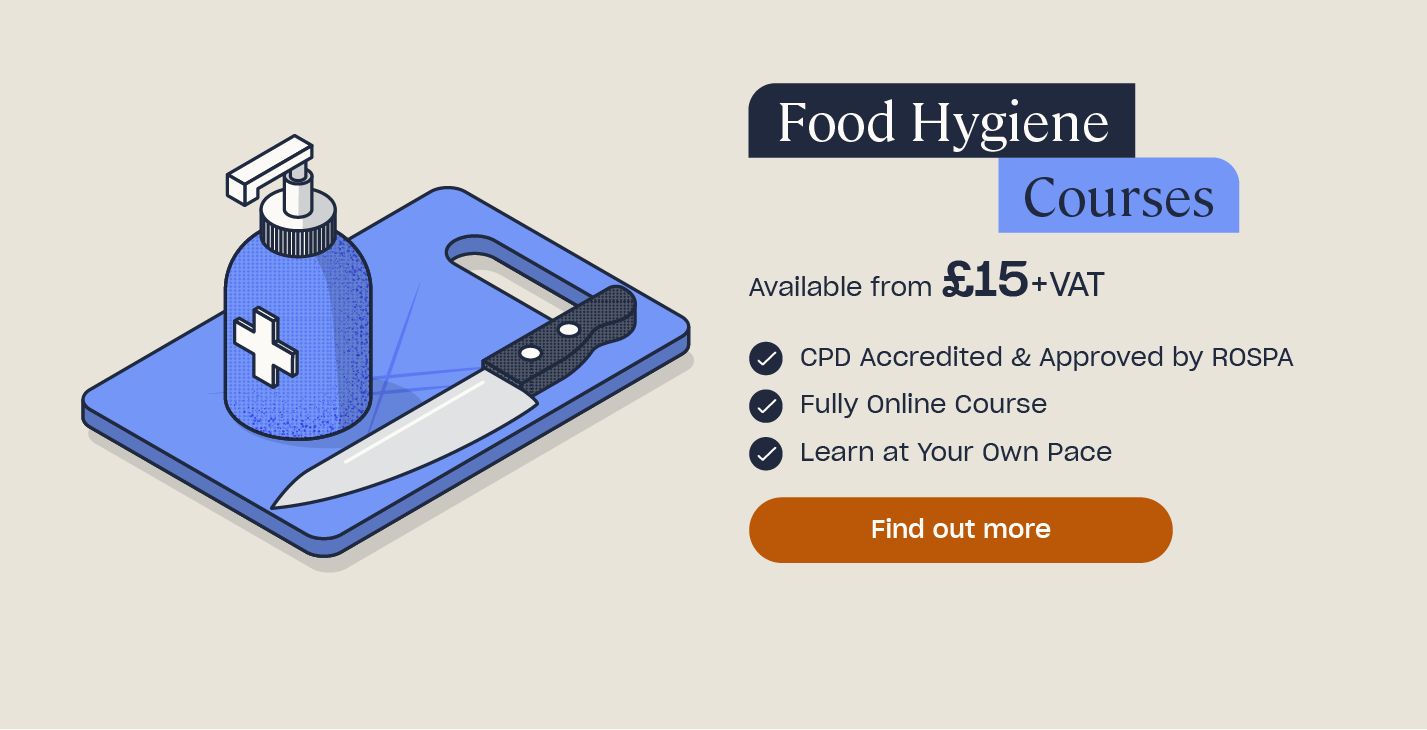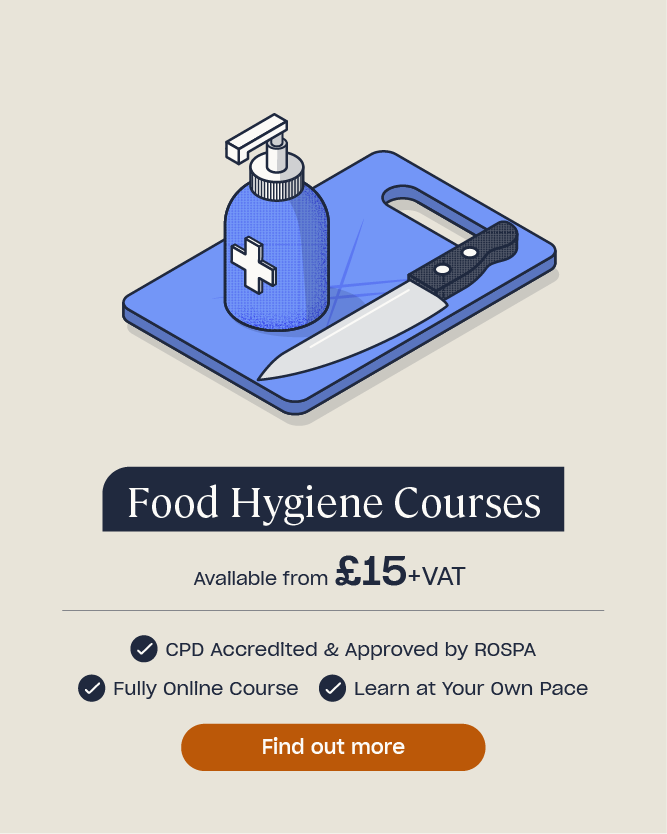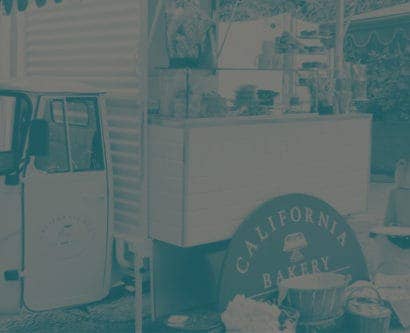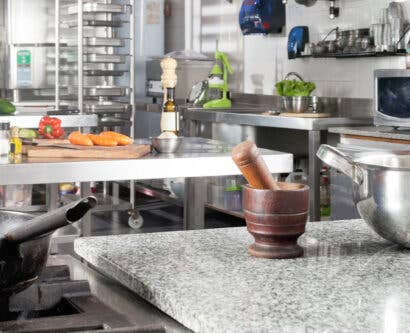The Food Hygiene Rating Scheme Explained: Answering your FAQs
Maintaining high standards of good food hygiene is essential for all those who work with food in any capacity. It is an integral part of keeping the public safe and can have a significant impact on the public’s perception of your food business. First introduced by the Food Standards Agency (FSA) in 2010, the Food Hygiene Rating Scheme (FHRS) provides the public with information about the food hygiene standards of the businesses they patronise. Since its introduction, the FHRS has driven up standards in food safety across England, Wales and Northern Ireland.
A good food hygiene rating is a clear indicator to prospective customers that you are operating safely and legally. Not only that, it shows your dedication to staying compliant and protecting the public from undue harm. Having a clear understanding of the FHRS and how it works is vital to obtaining and maintaining a high score. In this article we will outline everything you need to know about the FHRS and explain how scores are determined.
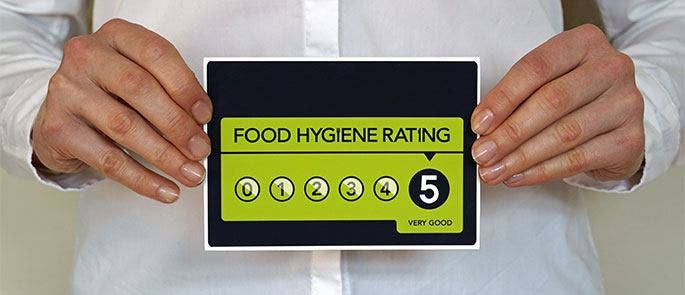
What is the Food Hygiene Rating Scheme?
The Food Hygiene Rating Scheme is a national scheme which runs across England, Wales and Northern Ireland. The FHRS is operated in partnership with local authorities and provides information to the public about the hygiene standards of food businesses. Any business that supplies food directly to consumers is included in the scheme, such as, but not limited to; restaurants, takeaways, supermarkets, pubs, food trucks, care homes and hospitals.
The FHRS enables consumers to make better informed decisions about the places they choose to buy from, whether it be for their weekly food shop or a night out at their local restaurant. The scheme also encourages businesses to improve and maintain high scores to both reduce incidents of customer illness and to attract prospective consumers.
What Do Food Hygiene Ratings Mean?
Under the FHRS businesses are given a rating from 5 to 0. How these ratings are calculated will be explored later in the article.
The rating scale is as follows:
Food Hygiene Rating 5 – Hygiene standards are very good.
Food Hygiene Rating 4 – Hygiene standards are good.
Food Hygiene Rating 3 – Hygiene standards are generally satisfactory.
Food Hygiene Rating 2 – Some improvement is necessary.
Food Hygiene Rating 1 – Major improvement is necessary.
Food Hygiene Rating 0 – Urgent improvement is necessary.
After an inspection and upon receiving a score, you will receive a sticker indicating your business’ food hygiene rating. In Wales and Northern Ireland it is a legal requirement for these stickers to be prominently displayed where it can be easily seen by customers. It is not currently mandatory for businesses in England to display their stickers, however the prominent display of a good hygiene score can serve as a reassuring sign for customers.
How are Food Hygiene Ratings Calculated?
Food hygiene rating inspections are conducted by Environmental Health Officers (EHOs). An EHO will visit your premises and use the Food Law Code of Practice to assess it in three categories. It is important to have a clear understanding of the different categories as a poor score in one can reduce your overall rating and potentially undermine the good systems you already have in place. For example, though you may maintain a high level of food hygiene, if a visiting EHO thinks that your training processes are inadequate, they may give you a lower score in that respective category which would reduce your overall rating.
The three assessment categories are:
- Food Safety and Hygiene Procedures – how hygienically the food is handled and how it is prepared, cooked, re-heated, cooled and stored.
- Structural Requirements – the physical condition of your business including cleanliness, layout, lighting, ventilation, pest control and other facilities.
- Confidence in Management – how you manage ways of keeping food safe, looking at processes, training and systems to ensure good hygiene is maintained.
Each category is scored individually and then added together to calculate the intervention score. The scores available for Food Safety and Hygiene Procedures and Structural Requirements are 0, 5, 10, 15, 20, 25. For Confidence in Management, the available scores are 0, 5, 10, 20, 30. The cumulative score from all three categories is then mapped to the food hygiene rating score and this determines what your food hygiene rating will be. The lower the intervention score, the higher the overall rating.
Though the scores are added together to determine an overall rating, the individual score of each category is of great importance. This is referred to as the additional scoring factor. Should a score for an individual category exceed the additional scoring factor, then the overall rating of the business would drop. For example, if your business received a total intervention score of 20 this would result in a food hygiene rating of 4, indicating that hygiene standards are good. However, if you scored 15 in Structural Requirements, then your rating would drop to 3, indicating that hygiene standards are generally satisfactory.
The final food hygiene rating that you receive is often seen as the most important part of a food hygiene inspection, especially as this is the score that customers will see and that can be found online. However, it’s equally important to understand the scoring for each category as this is how your rating is actually calculated. In the table linked in the button below you will find a breakdown of the scoring criteria for each category as determined by the FSA’s code of practice.
Understanding the scoring matrix used by EHOs helps you to better prepare for an inspection as you know exactly what they are looking for. It can also help you to identify areas for improvement before an inspection. Remember, EHOs visit premises unannounced and it is unlikely that you will know ahead of time that they will be visiting your business. As such, a thorough understanding of the scoring matrix, coupled with tools such as our inspection checklist and comprehensive staff training, can help you to ensure that you are maintaining high standards at all times, not just during an inspection.
The table above is used to score each category and calculate a total intervention score. This score is then mapped to get a final rating. Scores are mapped as follows:

Score mapping is an important part of the rating process as it can cause a drop in your score. As mentioned above, a high score in one category can undermine the hard work in other categories, resulting in a lower rating. It’s therefore important to understand variables such as exceeding the additional scoring factor and how that may impact your score.
Food Hygiene Rating Score FAQs
The FHRS is intended to protect the public and hold businesses to a high standard of food safety. Whilst the ratings that we see on display are easy enough to understand, the scheme itself can be somewhat confusing. As such, we have answered some of the most popular FAQs pertaining to the scheme.
How can I get a Food Hygiene Rating of 5? 
Attaining a 5 rating should be every food business owner’s goal. It indicates to customers that you are operating safely and legally and that your establishment is a trustworthy place to visit. To attain a 5 you need the lowest intervention score possible. This means that you are compliant in all three assessment areas, your staff can demonstrate best practice and your processes are well documented. Using the table provided you can identify exactly what you need to do to achieve the lowest score and how your current practices compare.
Getting a 5 rating isn’t just about having clean surfaces and it’s important that you don’t underestimate the significance of well documented evidence. For example, a visiting EHO may ask for proof of training and a brief overview of how you train staff. If your training procedures are informal with no certificates upon completion and no evidence of what has been learnt, it is unlikely to inspire confidence in management. However, being able to produce certificates from trusted and accredited training providers such as High Speed Training, is a clear indication to an EHO that training has in fact been completed and to a high standard.
What happens after a food hygiene inspection? 
In most circumstances the EHO who undertook your inspection will notify you of the score that you have been awarded at the end of their visit. They should then provide you with a window sticker with the appropriate rating. This sticker must legally be prominently displayed if you are in Wales or Northern Ireland. However, each local authority will have their own policy for communicating the final rating, so it is worth asking the EHO when you will find out your score.
Food hygiene ratings are available online and are uploaded onto the FSA website after an inspection. If you were awarded a 5 rating then your rating is uploaded immediately and available on the FSA ratings website as soon as possible. If you scored lower than a 5, it can take between 3 – 5 weeks after the inspection for the information to be published to allow time for an appeal to be submitted.
Can I appeal a Food Hygiene Rating score? 
In order to ensure that the FHRS is fair to businesses there are three safeguards in place. Due to these safeguards a business can:
- Make an appeal – If you choose to appeal you must make your appeal in writing within 21 days of being notified of your food hygiene rating. Your case will then be reviewed and in some cases another visit to your premises may occur. You will be notified of the results of your appeal within 21 days of the receipt of your appeal by your local authority. If you don’t agree with the outcome of your appeal, you can appeal that decision by judicial review. However, your rating will still be published online even if you decide to do this and will remain visible during the appeal process.
- Exercise a ‘right to reply’ – ‘Right to reply’ allows you to tell customers how your business has improved its hygiene standards or if there were unusual circumstances at play at the time of the inspection. This response is then published online alongside your rating.
- Request a re-rating inspection once improvements have been made – You will automatically receive a new food hygiene rating each time your premises are inspected. If you do not receive the score you expected you can request a re-rating inspection. However, you can only do this if you have accepted the rating and once you have made all the necessary hygiene improvements. Requesting a re-rating is not the same as appealing the outcome of an inspection and must only occur after you have made the recommended changes. It’s also worth noting that some local authorities charge a fee to recoup the costs of a re-rating inspection.
You can find more information about appealing a food hygiene rating here.
How regularly will my business be inspected? 
The regularity of your inspection depends on the type of business that you have. Some businesses are seen as higher risk due to the nature of food that they prepare, such as fresh fish or rare meat and so are inspected more frequently. Contrastingly, businesses that are classed as lower risk are inspected less frequently. Using the Food Law Code of Practices, an EHO will score a food business and then categorise it from A – E depending on their risk; this determines the regularity of visits.
The categories are as follows:
- A – At least every 6 months.
- B – At least every 12 months.
- C – At least every 18 months.
- D – At least every 24 months.
- E – At least every 3 years.
How can I prepare for a food hygiene inspection? 
As mentioned above, EHO inspections are unannounced. This is intentionally done so that you don’t purposefully make an effort solely for that day as EHOs want to see an accurate average day at your business. In theory, if you are following all the necessary rules and regulations and your staff are well trained, then you are already prepared for a food hygiene inspection and you simply need to maintain those standards.
However, there are ways in which you can prepare so that you are always ready for that little knock at the door. One of the most important ways to prepare for an inspection is to ensure all staff have the necessary training. An EHO can talk to any member of staff and ask them about the safety procedures that you have in place, so it is important that all staff have a basic knowledge and understanding of both food safety and your internal processes. Another way in which you can prepare is with an inspection checklist which you can use as a daily or weekly walk-through list to check that high standards are being maintained and that you are staying inspection ready.
Resources such as articles and online training are invaluable when it comes to readying yourself for an inspection. We have a selection of resources available including:
Understanding the Food Hygiene Rating Scheme is vital to attaining and maintaining a good score. Your FHRS score may well be the first interaction that a prospective customer has with your establishment and a high score can cement your business as a safe and trustworthy place to patronise.
Further Resources:
- How to Prepare for an EHO Inspection: Free Checklist
- 20 Ways to Sabotage a Food Hygiene Inspection
- How To Improve Your Food Hygiene Rating
- Food Hygiene Courses


